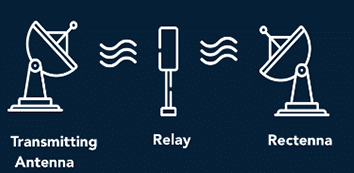An electricity startup company in New Zealand says they are working toward a launch of a world-first wireless energy transmission system they assert will be opening up the world's access to power. They reportedly will be using tele-energy technology to enable long-range wireless energy transmission that is safe, reliable, and cost-effective. Echoing the work of inventor Nikola Tesla, the company hopes to democratize access to electricity. If the company succeeds in rolling out the technology, it could usher in a new era of electrical engineering.
Nikola Tesla, who famously engineered the alternating current system toward the end of his life, was attempting to engineer a system where electricity could be transmitted to single antennas in consumers' homes. In turn, he hoped the wireless energy would power entire households and give everyone in the world access to electricity — the attempts at figuring out the technology led to the creation of the Tesla coil. Tesla, in the 1890s, managed to light a bulb across a distance of two miles using a Tesla coil.

Since then, wireless electrical transmission has been an elusive technology that no single company has been able to implement at a level that consumers could benefit from. However, a government-backed startup in New Zealand seems to have picked up where Tesla's work left off. Emrod, the startup in question, says they have developed a safe method for wirelessly transmitting electric power across long distances.
The technology utilizes electromagnetic waves to transmit energy wirelessly over vast distances. New Zealand's second-largest electricity distribution company, Powerco, will be first in line to test the new Emrod technology.
Tech entrepreneur Greg Kushnir spearheaded the technology. Surprised by how little development of wireless electricity technology was being worked on in the industry, he set out to recruit scientists and engineers from a company named Callaghan Innovation.
"We have an abundance of clean hydro, solar, and wind energy available around the world but there are costly challenges that come with delivering that energy using traditional methods, for example, offshore wind farms or the Cook Strait here in New Zealand requiring underwater cables which are expensive to install and maintain," said Kushnir.
"I wanted to come up with a solution to move all that clean energy around from where it's abundant to where it's needed in a cost-effective, eco-friendly way. Energy generation and storage methods have progressed tremendously over the last century, but energy transmission has remained virtually unchanged since Edison, Siemens, and Westinghouse first introduced electric networks based on copper wires 150 years ago."
How it all works
The company has patents pending for its technology, so the more proprietary technology the company is using is mostly under wraps for the time being. However, they do say they are working in frequency ranges in the ISM (Industrial, Scientific, and Medical) band - which are typically used in WiFi, Bluetooth, and RFID.
The prototype point-to-point transmission system Emrod engineered, along with Callaghan Innovation, impressed Kiwi government funders. To further demystify the tech the startup is working on, Kushnir spoke to New Atlas.
"Transferring energy with microwaves has been around for decades. In the 70s, NASA showed it could support a helicopter drone in the air, charging it with microwaves from the ground. It's been around for a while. What's changed in the last few years is mostly metamaterials technology. New materials that allowed us to convert the energy back into electricity very, very efficiently. That was what made it viable for commercial use. Before that, it's been around, but mostly used for military purposes," he said.
IT is the proprietary beam shaping, metamaterials, and rectenna technology that Emrod is keeping under wraps for now.
Kushnir goes on to say, "Electromagnetic metamaterials can absorb electromagnetic radiation and turn it into heat, or electricity, or make it go away. It's essentially stealth technology, that's what it's been used for in the military."
The startup assures critics that their system will produce no waves, no radiation, and no environmental impact. They have been testing their tech, sending 'a few watts' between two points spaced 130 feet from each other. The startup ultimately has faith that they are on the right track:
"The statistics are pretty compelling. We are talking about a potential 50 percent increase in sustainable energy uptake, up to 85 percent reduction in outages and up to 65 percent reduction in electricity infrastructure costs due to the Emrod solution," Kushnir concluded.

The startup wants people to imagine the possibilities when power can be accessed anywhere. The startup hopes this technology can finally power rural communities who don't have much access to electricity. If they get wireless electricity for consumers right, the startup might be hailed as one of those that managed to achieve what Nikola Tesla dreamt of over a hundred years ago.
Works Cited
"Press Release: NZ Start-up Launches World-First Long Range Wireless Power Transmission." Emrod Energy, 2 Aug. 2020, emrod.energy/press-release-nz-start-up-launches-world-first-long-range-wireless-power-transmission/.
silvae/Depositphotos, and Emrod. "New Zealand's Wireless Power Transmission: Your Questions Answered." New Atlas, 4 Aug. 2020, newatlas.com/energy/wireless-power-transmission-emrod-interview/.
